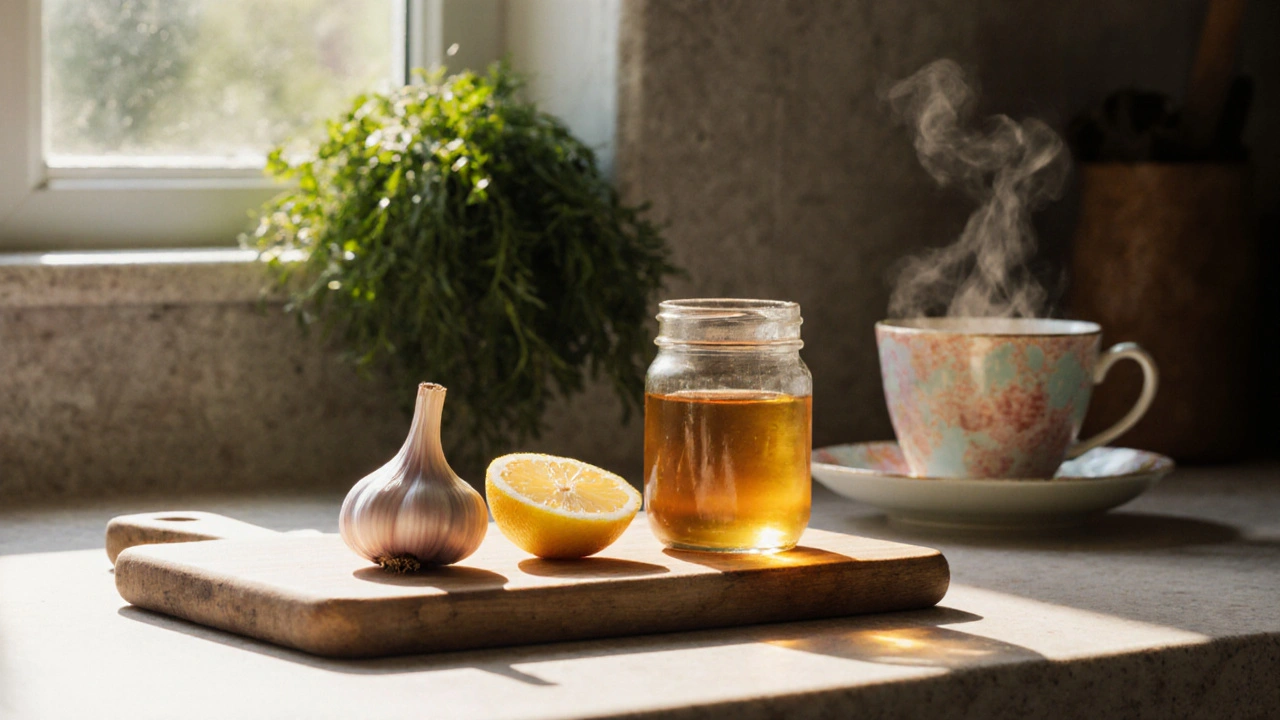Probiotika – podpora zdraví střev a imunitního systému
When talking about probiotika, živé mikroorganismy, které po konzumaci přinášejí prospěšné účinky na lidské tělo. Also known as živé bakterie, they primarily act on the střevní mikroflóru, komunitu prospěšných bakterií v trávicím traktu and consequently influence the imunitní systém, soustavu obrany, která rozpoznává a odstraňuje cizorodé látky. In simple terms, probiotics boost the gut bacteria, the gut bacteria shape the immune response, and the immune response determines how we react to allergens – a clear chain of cause and effect.
Why does this matter for people dealing with allergies? Because the gut‑immune axis is a major gateway for allergic sensitisation. When the střevní mikroflóra is balanced, it trains the imunitní systém to tolerate harmless substances instead of overreacting. Studies from Czech allergy clinics show that patients who regularly consume probiotic‑rich foods report fewer hay fever flare‑ups and milder skin reactions. This isn’t magic; it’s a matter of competition. Good bacteria occupy niches that potential pathogens and allergen‑triggering microbes would otherwise exploit. They also produce short‑chain fatty acids, which act as signalling molecules that dampen inflammatory pathways. So, probiotika → střevní mikroflóra → imunitní systém → menší alergie is a logical flow that many of our articles expand on.
Probiotika v praxi
Choosing the right probiotic isn’t a lottery. Look for strains that have documented effects on the immune system – Lactobacillus rhamnosus GG, Bifidobacterium longum and Saccharomyces boulardii are the most researched. Each strain carries specific attributes: some enhance barrier function of the intestinal lining, others modulate IgE production, the antibody type that drives allergic reactions. Pairing probiotics with prebiotika, nedigestovatelné vlákniny, které slouží jako potrava pro prospěšné bakterie creates a synbiotic effect – you feed the good microbes, so they thrive. Common prebiotic sources include chicory root, garlic, onions and whole‑grain cereals. A practical routine could be: a probiotic capsule with 10 billion CFU taken after breakfast, plus a prebiotic‑rich snack like kefir with banana or a bowl of oatmeal with flaxseed.
If you’re on antibiotics, the gut balance can be disrupted in days. Adding a probiotic during and after the course helps re‑colonise the gut faster and may reduce the risk of antibiotic‑associated diarrhea, which itself can aggravate skin and respiratory allergies. For children with pollen allergies, a daily yogurt containing live cultures can be a gentle entry point. Adults who prefer non‑dairy options can opt for fermented soy drinks or kombucha, as long as the label confirms “živé kultury”. Remember, consistency matters – benefits appear after several weeks of regular intake, not after a single spoonful.
Beyond supplements, whole foods are a natural source of probiotics. Fermented cabbage (kvašená zelí), kimchi, miso, tempeh and traditional české kefíry are rich in diverse strains. Including them in meals not only diversifies the gut flora but also introduces phytochemicals that further support immune health. The key is variety: a rotating menu of fermented items prevents the gut from becoming dependent on a single strain.
In our collection below you’ll find detailed guides on how to recognise allergy symptoms, how to prepare for an allergologist visit, and specific tips for managing pollen‑related reactions. Interwoven with those topics are practical probiotic recommendations, diet plans, and lifestyle tweaks that together build a stronger, less reactive immune system. Dive into the articles to discover which probiotic strains match your allergy profile, how to combine them with prebiotic foods, and what everyday habits keep your gut—and your nose—happy.
Jak přirozeně překonat alergie: osvědčené přírodní metody
Objevte praktické přírodní tipy - bylinky, vitamín C, probiotika a lokální imunoterapii - které opravdu pomáhají zmírnit alergie a posílit imunitu.
© 2025. Všechna práva vyhrazena.

